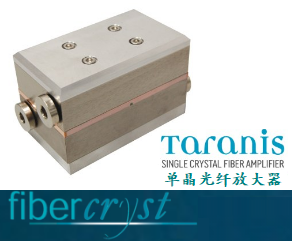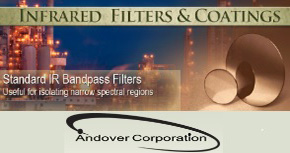公司简介
We develop software for simulating laser and optical systems. We offer ASLD, an all-in-one, high performance software package with an intuitive user interface. This enables laser manufacturers to design various laser resonators and amplifiers that fulfil their needs with the same software package. We help our customers find solution for their laser design and development tasks. The users can optimize the design process by using the fast & powerful simulation tools of ASLD software.
服务描述
Thermal And Structural Analysis
Thermal and structural analysis of laser crystals are needed to calculate thermal lens effects.
An user-friendly graphical user interface (GUI) allows a flexible design of the laser crystal geometry, like slab, oblique face, cylinder, and pyramid, and various types of cooling.
ASLD contains a fast and highly accurate 3-dimensional Finite-Element Method (FEM). It can be applied for very long or thin lasers crystals and small pump lights with small pump radius as well. The Finite Element solver takes into account the frequency-dependent absorption of the laser crystal and allows to set spectrum of pump light.
This also includes a complete 3-dimensional time dynamic analysis (by FE), which is required for the simulation of thermal lens effects of lasers with pulsed pump light. Watch video on Youtube. | 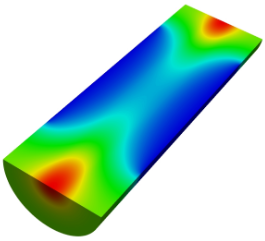 |
Output Power And Beam Quality Analysis
The Dynamic Multi-Mode Analysis DMA calculates output power and the beam quality (M2) depending on the beam radius, pump/resonator configuration, and special optical elements, such as, apertures and Gaussian output couplers.
 | The DMA method allows the calculation of the population inversion, in the laser crystal, based on a finite volume discretization grid. The time dynamic behavior of the laser is simulated by rate equations for different high and low order Gaussian modes. Watch video on Youtube. |
Rate Equation Systems
ASLD can simulate dynamic behaviour of resonator modes based on a set of arbitrary rate equations. This includes simulation of co-doped materials and various interionic mechanisms like upconversion, energy transfer, or cross-relaxation. Rate equations are stored in a material database, which can be extended by the user. A user friendly GUI let the user setup individual rate equations by adding interionic mechanisms and energy levels.
 | Simulation of an arbitrary set of rate equations allows an accurate simulation of the dynamic behaviour of resonator modes. Moreover, it enables user to accurately simulate the thermal lens effect in a laser crystal. The heat source can be calculated using the iterionic transitions and the populations. Lasers with gain medium like Nd:YAG, Ho:YAG, Er:YAG, Er:glass, or Tm, Ho:YAG can be simulated by ASLD. Also, ASLD rate equations take into account systems with multiple levels, temperature dependent stimulated emission cross section and reabsorption. Watch video on Youtube. |
Laser Stability, Beam Radius And Parameter Analysis
ASLD analyzes the stability of a solid-state laser and calculates its beam radius depending on the resonator configuration and thermal lensing effects. Also, the stability of a laser resonator can be calculated depending on the laser beam polarization. ASLD simulates also the main factors influencing the stability of lasers.
Moreover, ASLD provides a tool for parameter analysis in order to optimize the design of a laser resonator. The output power, beam quality and stability diagram of a laser resonator can be plotted for a range of input parameters:
• Power of pump light
• Pump frequency shift
• Reflectivity of the output mirror
ASLD is capable of calculating the impact of each input parameter variations on the above mentioned output quantities. The parameter analysis uses advanced algorithms for minimal computation time and saves resonator optimization costs. |  |
Ultra-Short Pulse Amplifier
The ASLD package simulates the ouput power and gain of amplifiers. The population inversion is modelled on a three dimensional finite volume grid. This allows an accurate calculation of the influence of pump configuration on output power. The above effectively simulates single-pass and double-pass. Furthermore, ultra-short and chirped-pulse amplifiers can also be simulated.
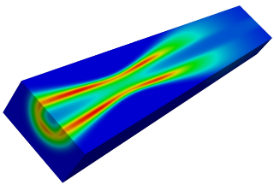 | ASLD accounts for effects like gain guiding, Kerr lensing effect, and pump light separation providing accuracy in calculating output power. Methods like Beam Propagation Method (FEM-BPM) are used for simulating beam shape of a laser amplifier. This method allows accurate calculation of guiding effects. Ray tracing is included in order to define pump light in a user-friendly manner. Moreover, ASLD rate equations take into account three and four level systems. Watch video on Youtube. |
Pump Light Analysis
| ASLD accurately simulates the influence of pump light on the output power, beam quality, and stability of lasers. The simulation accounts for the spectrum of the pump light, the polarization, and its frequency dependent absorption within laser crystals, for both diodes and flash lamps. End- and side-pumped geometries can therefore be designed accordingly. In ASLD, the pump light can be described by super-Gaussian formula or a ray tracing method. ASLD ray tracing can simulate the pump light configuration. The following effects are taken into account: Absorption, scattering effects, and reflection of light. | 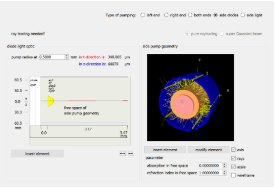 |
In summary, an optimal pump light design is essential for obtaining a laser with high output power and beam quality. Watch video on Youtube.
ASLD enables the analysis of pulse energy, pulse-width, beam quality and pulse frequency of the output of both active and passive Q-switches.
 | ASLD also includes an accurate algorithm accounting for the physical effects of passive Q-switching with a saturable absorber. The physical properties of the saturable absorber, like ground-state and excited-state absorption cross-sections, are accounted for this purpose Mode competition in the resonator can also be simulated by a dynamic mode analysis of both low and high Gauss modes. Watch video on Youtube. |











